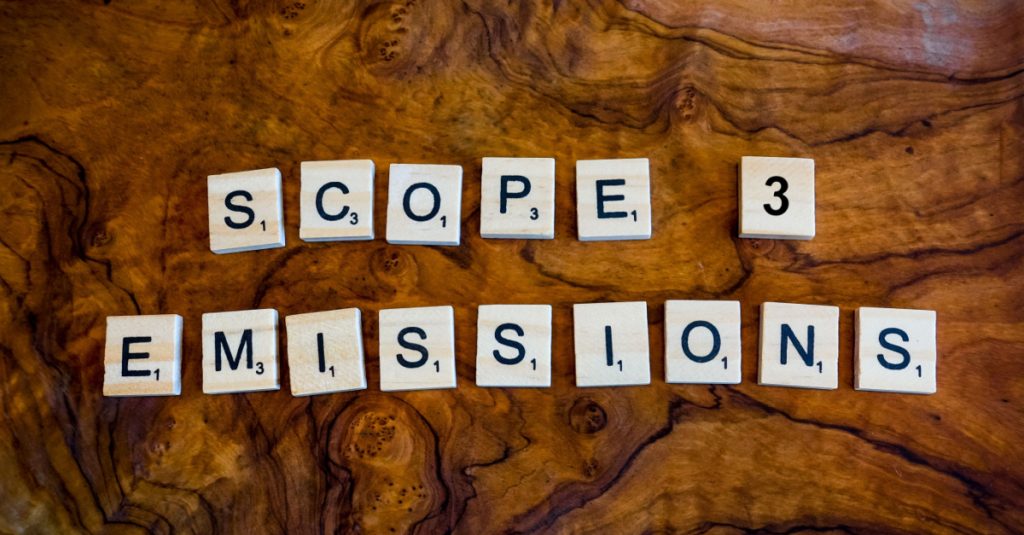Scope 3 emissions, also called value chain emissions, are often the focus of companies’ sustainability initiatives, for good reason. While Scope 1 and Scope 2 emissions stem from direct company activities and purchased energy, respectively, Scope 3 emissions comprise a much broader category, covering everything from the production of purchased goods to the end-of-life treatment of sold products. The scope of this category means that, in many cases, it is easily responsible for the majority of a company’s total greenhouse gas emissions. According to some estimates, Scope 3 emissions can make up more than 70% of total carbon emissions.
However, reducing these emissions is a complex undertaking. And while more companies want to join the sustainability movement, the fact is that true progress requires a commitment to action and a strategic approach. In January 2024, for example, all ships of at least 5,000 gross tonnage that enter EU ports will be required to participate in the Emissions Trading System (EU ETS), a cap-and-trade program to incentivize reduced emissions. Essentially, what the shipping sector is seeing is that just talking about going green is not enough. Leadership must move beyond abstract ideas and dive into the details of how to reduce Scope 3 emissions, starting with the six actionable steps below.
Knowing Your Enemy: Understanding Scope 3 Emissions
As mentioned, Scope 1 emissions are direct emissions that a company has complete ownership and control over. Scope 2 emissions are indirect emissions in their own category for purchasing electricity, heating, cooling, and steam. Together, these are relatively straightforward to monitor since they come from company operations and energy usage. Scope 3 emissions, on the other hand, come from various sources, making them a more significant challenge to quantify.
Accurate measurement of a company’s full carbon footprint requires layers of research and investigation. Assessing the emissions of one supplier leads to determining the emissions from that company’s suppliers, and so on. This can become very complex very quickly, as companies must engage with their entire supply chain to cover their bases and create lasting change.
6 Actionable Steps Toward Reduced Scope 3 Emissions
Fortunately, for the number of points of research needed to fully capture the extent of a company’s Scope 3 emissions, there are also as many opportunities for reducing these emissions. This makes for a unique approach for every company. They can start with these six steps and continue as they learn more about their emission reduction opportunities.
1. Supply Chain Analysis
A company’s first step should be conducting a complete supply chain analysis, starting with mapping out the entire chain and accounting for each link. This makes it possible to identify which pieces of the supply chain significantly contribute to Scope 3 emissions. This could range from specific energy-intensive processes of suppliers to the transportation methods used to move products. If companies are aware of the potential impact of every contributor, they can prioritize where they invest their efforts.
In this step, accurate data is absolutely essential. This is where Greenabl utilizes the GLEC (Global Logistics Emissions Council) framework methodology to provide carbon emission calculations according to ISO 14083 standards. Delivering data seamlessly via API or data uploads, Greenabl provides the accurate measurement and calculations that companies need for informed decision-making. Companies can then ensure their strategies are based on a complete understanding of the current state of emissions, which they can continue to measure and monitor moving forward. Financially, it helps them safeguard against misdirecting their resources, but it also helps a company’s credibility in reporting. They can track their sustainability and adjust based on verified data.
2. Setting Clear Emission Reduction Goals
The next step is to set targeted emission reduction goals within the context of the company’s current carbon footprint. Setting these goals should lean on a proven structure, like SMART, to set Specific, Measurable, Achievable, Relevant, and Time-bound goals.
Instead of: “We aim to reduce emissions from our shipping activities,” a company can make sure to meet the SMART criteria, revising this goal to be:
- Specific – “We commit to reducing our CO2 emissions from our trans-Pacific ocean freight operations.”
- Measurable – “We commit to reducing our CO2 emissions from trans-Pacific ocean freight by 15%.”
- Achievable – “By optimizing routes and collaborating with eco-conscious shipping partners, we expect we can achieve this 15% reduction.”
- Relevant – “As a global manufacturer with the majority of our goods transported across the Pacific, focusing on this area of our shipping operations is highly relevant and will produce meaningful results.”
- Time-bound – “We commit to achieving this 15% reduction in CO2 emissions from our trans-Pacific ocean freight by the end of 2025.”
Combining all these elements, the SMART goal reads: “We commit to reducing our CO2 emissions from trans-Pacific ocean freight by 15% by the end of 2025, using route optimization strategies and partnering with eco-conscious shipping companies.”
SMART goals should also align with the company’s broader sustainability values and strategy. This alignment ensures consistency across all company initiatives and encourages support from stakeholders, whether employees or investors. They can better engage with emission reduction efforts by seeing how these efforts fit within the company’s overarching vision.
3. Supplier Engagement and Collaboration
Another key part of accurate data comes from building strong, transparent relationships with suppliers. Companies should work toward a culture of collaboration, emphasizing the shared benefits of sustainability efforts. For consistency, they should also adopt standardized data collection methods throughout the supply chain to ensure data reliability.
Companies can encourage suppliers to embed emission reduction measures and sustainable practices into their operations. One way to do this is by sharing any resources offering insights into effective emission-reducing technologies or strategies they’ve found beneficial. Joint initiatives, where both the company and supplier collaborate on sustainability projects, can compound the impact. This can range from experimenting with new eco-friendly materials to co-developing waste reduction methods. With transparency and cooperation, companies can help their efforts go further.
4. Transportation Optimization
There are a variety of ways companies can optimize their transportation emissions through how they manage their logistics. One option is to consider alternative transportation modes that offer greater energy efficiency, for example, air instead of ocean freight, rail instead of trucks, or leveraging electric vehicles for last-mile deliveries. Other approaches include working with carriers that use route optimization technology to reduce the distance traveled or using load consolidation tools to make the most out of every trip and reducing the number of trips needed.
For any of these strategies to work, they must be accurately informed using reliable carbon emission calculations. This quality of data is what Greenabl provides companies for route planning and supply chain planning. They can proactively use the calculated carbon emissions to help drive smarter decisions to further minimize future Scope 3 emissions.
5. Energy Efficiency and Renewable Sources
Similar to improving transportation optimization, shippers shift to working with supply chain partners that focus on energy efficiency to lower their carbon emissions. Carriers that use alternative fuels can lead to considerable carbon-emission savings, just as an energy-efficient facility will produce fewer Scope 3 emissions for their customers. They may employ automated systems to reduce fuel consumption or use renewable energy sources, like solar, wind, or hydroelectric power, to reduce their carbon footprint.
6. Product Life Cycle Analysis
It’s important to trace the environmental impact throughout the lifecycle of each product from a holistic vantage point to cover every opportunity for reducing emissions. In doing this, companies can pinpoint stages where emissions are highest, whether during raw material extraction, manufacturing, transportation, usage, or disposal. It can lead to changes like adopting a circular economy model, where products or their components are reused, repurposed, or recycled. This thorough analysis helps companies realize the best results for their efforts.
To Lower Scope 3 Emissions, Collaboration is Key
When it comes to informing their Scope 3 emission reduction strategies, companies must have access to quality carbon emissions measurement plus tools to assist with mitigation efforts. At Greenabl, we’ve designed our platform to be easy-to-use and easy to integrate as well, helping sustainability become ingrained into a company’s decision-making processes. Greenabl supports the entire process with accurate data, strategic insights through reporting and analytics, and added resources like our partnership with Cloverly, which brings a consolidated marketplace for certified carbon credits and removals.
Greenabl is making it simple for companies to set sustainability goals and achieve them, whether they’ve already made progress with past emission reduction efforts and are looking for an easier way or they’re just getting started.
Schedule a call and join Greenabl today.


